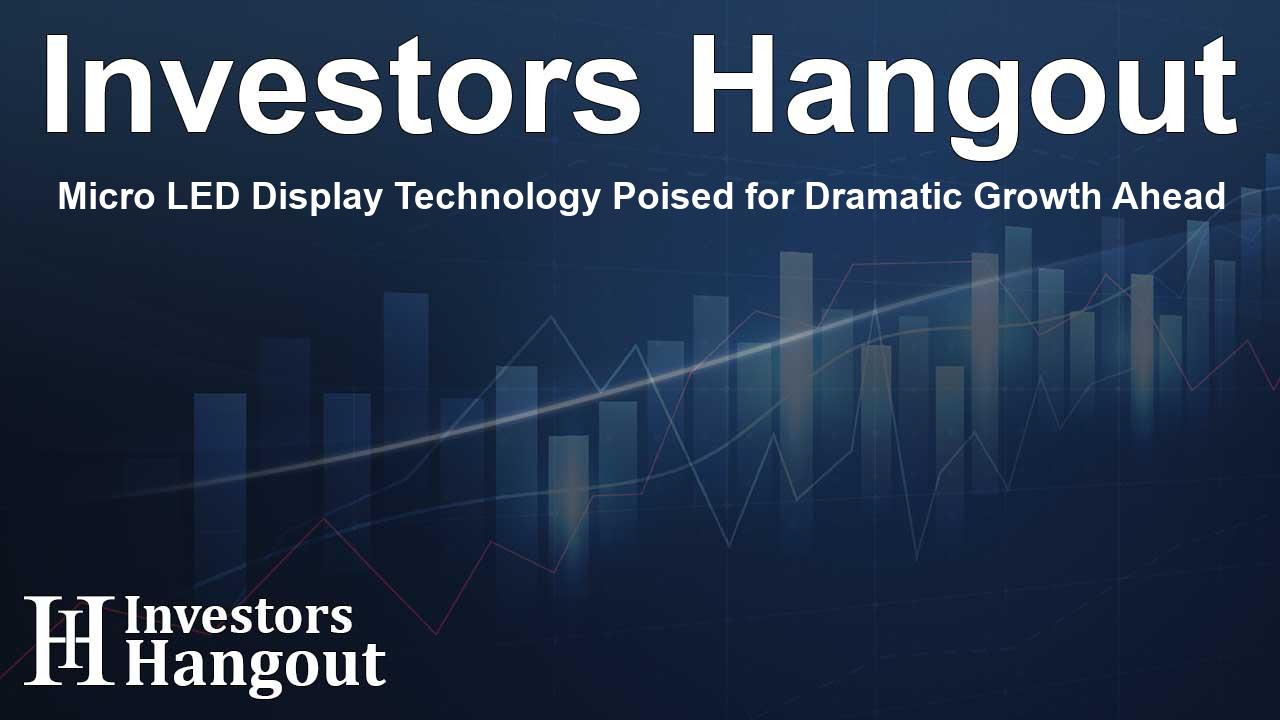Micro LED Display Technology Poised for Dramatic Growth Ahead

Micro LED Display Market Forecast to Surge
Recent studies indicate that shipments of micro light-emitting diode (LED) displays are expected to reach an impressive 34.6 million units by 2031. While this growth appears significant, it's crucial to note that micro LED displays will still represent just a fraction—about 0.9%—of the total display market. The technology is currently most viable in certain specific applications, which will influence its competitiveness.
Factors Influencing Development and Adoption
Reports suggest that following some delays in development, particularly by major brands such as Apple, several manufacturers have put a temporary hold on the advancement of related components. This slowdown comes after Apple announced changes in its micro LED display project originally planned for its watch products. Consequently, recent evaluations by Omdia have led to a revision of the market's trajectory for the short term based on altered expectations.
Continued Innovations in Micro LED Technology
Future Projections and Market Segmentation
Despite the recent setbacks in some quarters, many companies remain committed to advancing micro LED technology aggressively. According to forecasts by Omdia, by 2027, shipments within the micro LED display market are set to reach approximately 1.7 million units. This growth is largely expected to be driven by light-emitting diode on-silicon backplane (LEDoS) technologies suitable for ultra-small display devices. Applications for these devices are particularly promising in areas like extended reality (XR), with projections that smart glasses will make up nearly 24.4% of the market by 2031.
Technological Advantages and Market Applications
A senior research manager at Omdia, Jerry Kang, noted that the design requirements for smart glasses include low power consumption and excellent visibility even under direct sunlight, making micro LEDs particularly attractive. Notably, a few LEDoS manufacturers are already producing displays with diagonal sizes as small as 0.15 inches, which aligns well with the needs of lightweight smart glasses compared to traditional display technologies.
Applications Beyond Consumer Electronics
The year 2024 marked the unveiling of numerous prototypes for micro LED display technology by several manufacturers. These prototypes primarily cater to automotive needs, public displays, and even the evolving virtual studios market. This emphasis indicates suppliers are anticipating a rise in the adoption of micro LEDs in specific niches.
Competitive Landscape amidst Cost Efficiency
Many display suppliers are targeting segments of the market where traditional OLED or LCD options fail to satisfy customer requirements for specific dimensions and performance features. As a result, they are strategically positioning micro LEDs as a viable solution. Furthermore, various component suppliers are working diligently to roll out new technologies that aim to improve the manufacturing processes associated with micro LED displays.
Insights from Omdia's Market Tracker
Omdia's 'Micro LED Display Market Tracker' report serves as a vital resource that consolidates information on technological trends and developments within the micro LED display industry. It encompasses detailed forecasts regarding market growth, cost assessments, and a comprehensive technical overview that spans across the entire supply chain, including panel manufacturers and various product brands.
About Omdia
Omdia, a part of Informa TechTarget, Inc. (Nasdaq: TTGT), operates as a distinguished technology research and consulting group. Leveraging profound expertise in technology markets, Omdia provides insightful analysis that enables organizations to make informed growth decisions tailored to their specific needs.
Contact Information
For inquiries, please reach out to Fasiha Khan directly.
Frequently Asked Questions
What is the projected growth of the micro LED display market?
The micro LED display market is expected to see shipments reach 34.6 million units by 2031.
What applications are primarily driving micro LED development?
Extended reality (XR) devices, particularly smart glasses, are among the key applications boosting micro LED development.
How does micro LED technology compare to OLED and LCD?
Micro LED technology is gaining advantage due to its lightweight design and energy efficiency, addressing gaps left by OLED and LCD options.
What contributions does Omdia provide to the market?
Omdia offers essential insights, forecasts, and analyses that help stakeholders understand the evolving micro LED landscape.
What are LEDoS technologies, and why are they significant?
LEDoS (light-emitting diode on-silicon) technologies enable ultra-small display sizes, making them suitable for advanced applications like smart glasses.
About The Author
Contact Kelly Martin privately here. Or send an email with ATTN: Kelly Martin as the subject to contact@investorshangout.com.
About Investors Hangout
Investors Hangout is a leading online stock forum for financial discussion and learning, offering a wide range of free tools and resources. It draws in traders of all levels, who exchange market knowledge, investigate trading tactics, and keep an eye on industry developments in real time. Featuring financial articles, stock message boards, quotes, charts, company profiles, and live news updates. Through cooperative learning and a wealth of informational resources, it helps users from novices creating their first portfolios to experts honing their techniques. Join Investors Hangout today: https://investorshangout.com/
The content of this article is based on factual, publicly available information and does not represent legal, financial, or investment advice. Investors Hangout does not offer financial advice, and the author is not a licensed financial advisor. Consult a qualified advisor before making any financial or investment decisions based on this article. This article should not be considered advice to purchase, sell, or hold any securities or other investments. If any of the material provided here is inaccurate, please contact us for corrections.
